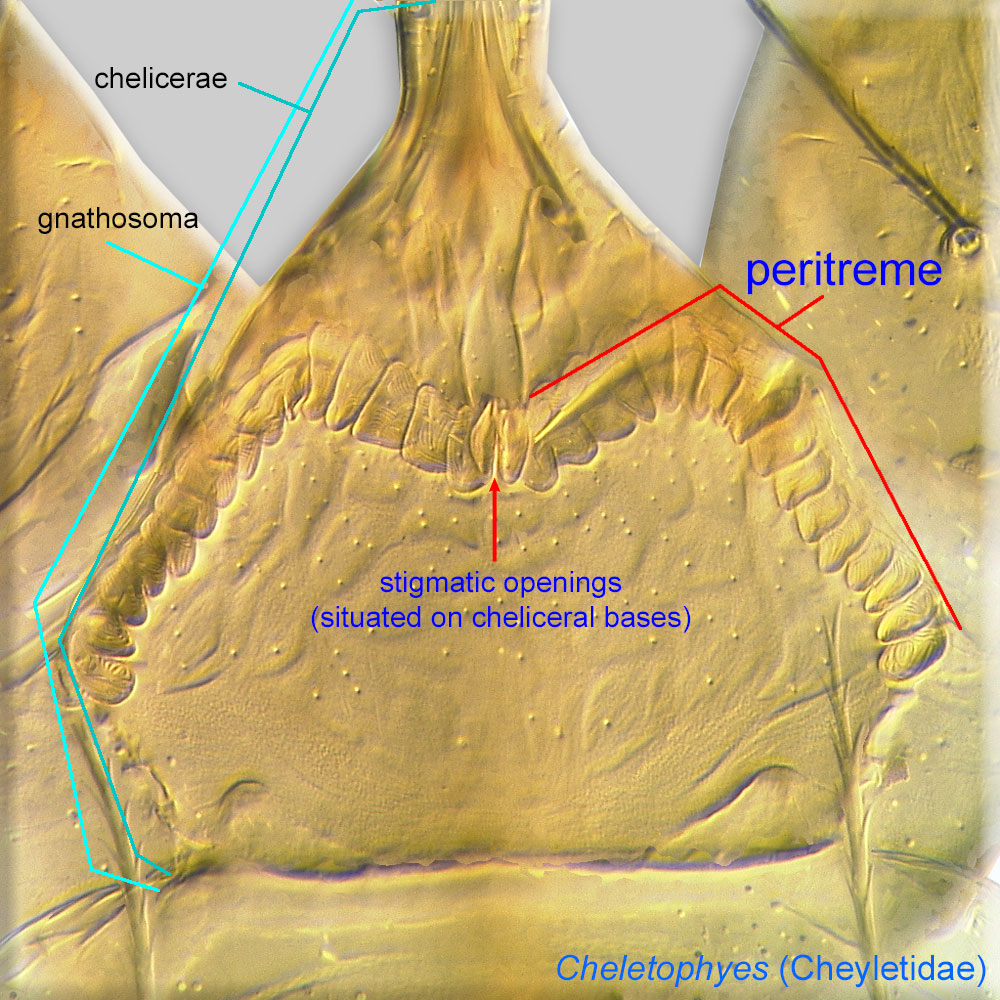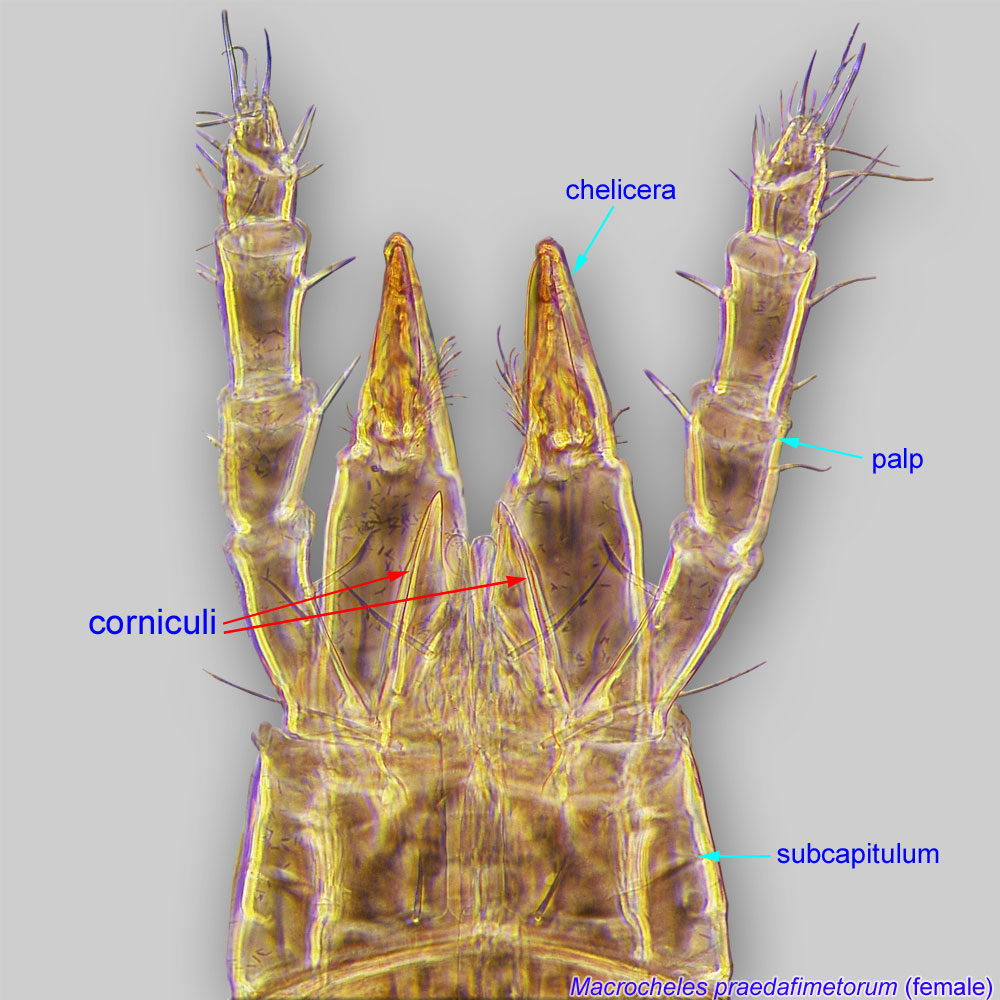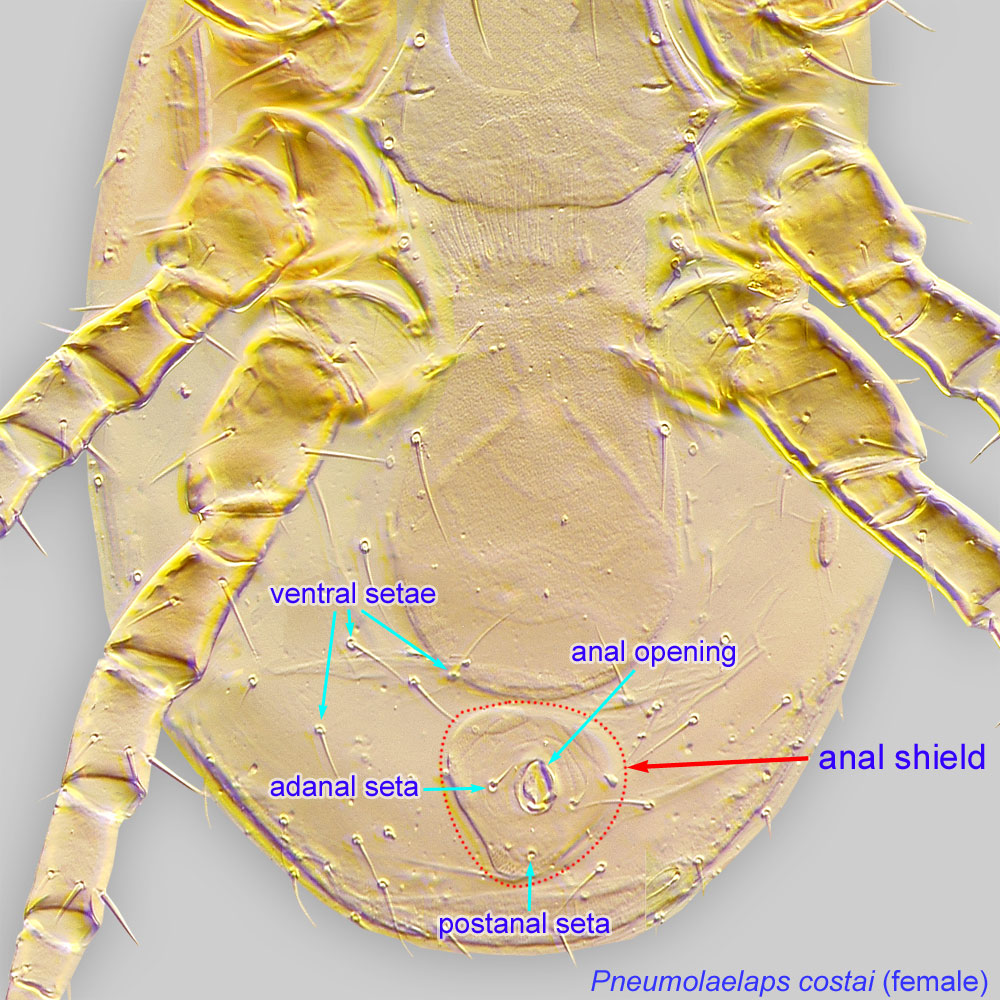presumably lives in bee nests and disperses on adult bees; details of biology unknown
Stevelus Hunter, 1963Hunter, 1963:
Hunter, P. E. 1963. Two genera of mites associated with stingless bees (Acarina: Laelaptidae). Acarologia. 5:5-12.
Superorder Parasitiformes » Order Mesostigmata » Suborder Monogynaspida » Hyporder Dermanyssiae » Family Laelapidae » Genus Stevelus
Stevelus amiculus Hunter, 1963Hunter, 1963:
Hunter, P. E. 1963. Two genera of mites associated with stingless bees (Acarina: Laelaptidae). Acarologia. 5:5-12.
Female: Idiosomal shield short, not covering posterior body (Fig. 1). PeritremesPeritreme:
Paired, tubular, elaborated extensions of a tracheal system associated with stigmatic openings. Can be chambered, arch-like, and situated on the bases of chelicerae as in Cheyletidae (Prostigmata) or, in Mesostigmata, linear and situated on the lateral sides of the body.
 wide, wider than stigma (Figs. 1, 5). AmbulacraAmbulacrum:
wide, wider than stigma (Figs. 1, 5). AmbulacraAmbulacrum:
The claws and empodium of the apotele or pretarsus.
elongated (Fig. 2, 11). Claws reduced (Fig. 11). CorniculiCorniculus:
Paired, horn-like process (sometimes toothed, bifurcate, trifurcate, spine-like, spatulate, or membranous) on the subcapitulum of parasitiform mites. These processes usually support the salivary styli. If toothed could be confused with a rutellum, a possibly homologous structure in Acariformes and Opilioacarida.
 membranous (Fig. 6). Ventral gnathosomal setae (hypostomatic and palpcoxal) short, spiniform (Fig. 6).
membranous (Fig. 6). Ventral gnathosomal setae (hypostomatic and palpcoxal) short, spiniform (Fig. 6).
Female: PeritremesPeritreme:
Paired, tubular, elaborated extensions of a tracheal system associated with stigmatic openings. Can be chambered, arch-like, and situated on the bases of chelicerae as in Cheyletidae (Prostigmata) or, in Mesostigmata, linear and situated on the lateral sides of the body.
 not extending beyond legs II (Figs. 1, 5). Tectumtectum:
not extending beyond legs II (Figs. 1, 5). Tectumtectum:
The leading dorsal, shelf-like projection of the basis capitulum in Mesostigmata. Also known as gnathotectum or epistome.
well-sclerotized (Figs. 1, 9). Anal shieldanal shield:
In Mesostigmata, a ventral shield bearing the anal opening and circumanal setae (adanal or postanal setae), but without any ventral setae or pores (lyrifissures) on it. If ventral setae are present on shield than referred to as a ventrianal shield.
 transversely oval (nearly circular); not elongated longitudinally or triangular (Fig. 10).
transversely oval (nearly circular); not elongated longitudinally or triangular (Fig. 10).
This genus is known from a single species, Stevelus amiculus.
Neotropical region (Panama)
The single known female was collected from the nest of an unidentified stingless bee (Meliponini) (Hunter, 1963Hunter, 1963:
Hunter, P. E. 1963. Two genera of mites associated with stingless bees (Acarina: Laelaptidae). Acarologia. 5:5-12.).
permanent permanent:
associated exclusively with bees or their close relative, wasps; cannot live without these hosts
(assumed)